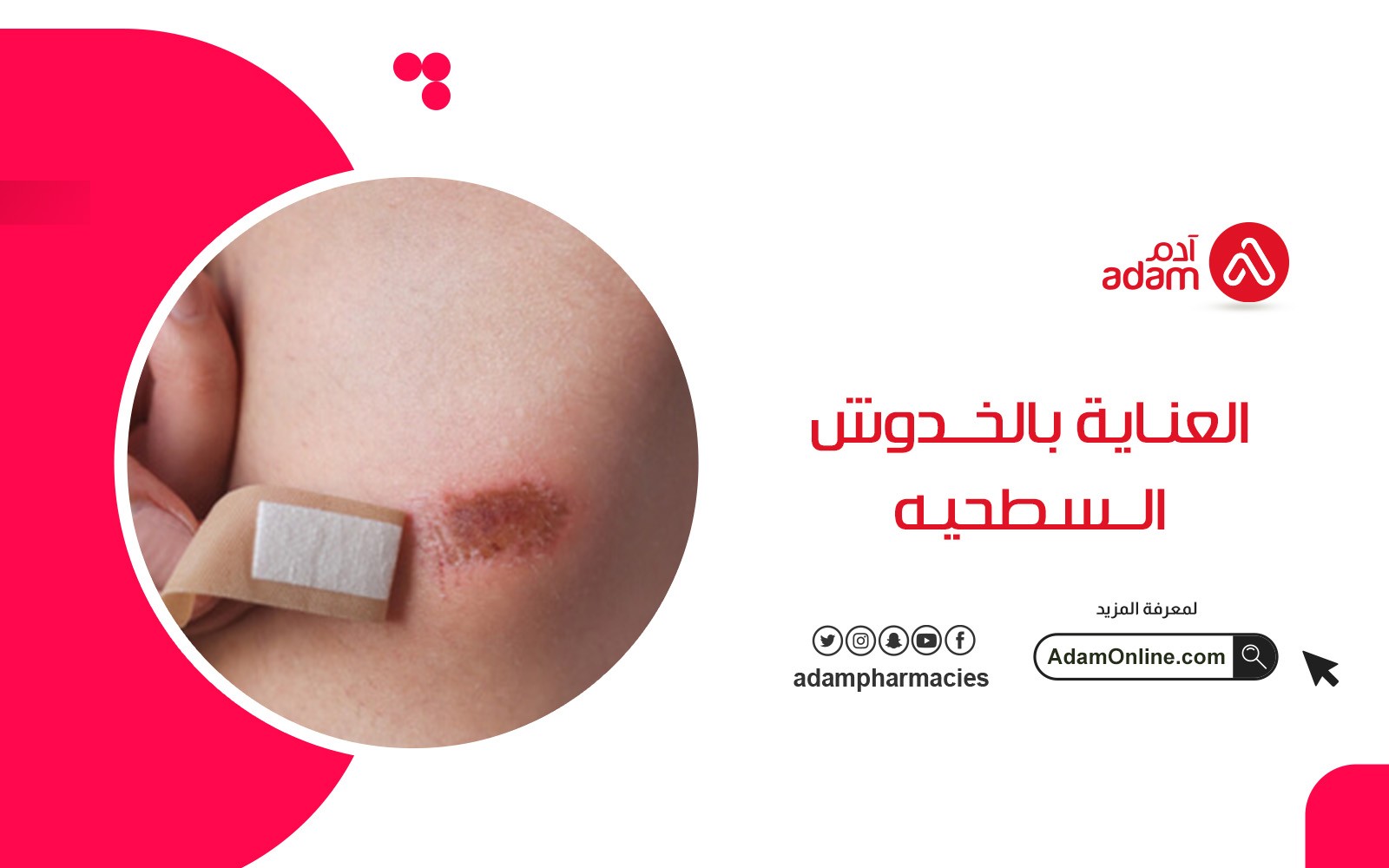Surface Scratch Care

Minor abrasions and scrapes are common in everyday life. Your knee may scratch if you fall off your bike. Abrasion can occur if you rub your elbow against something rough. These cuts are usually not particularly serious and with some direct care techniques, you can simply take care of surface scrapes at home .
What are scratches and abrasions?
Scratches are usually small, shallow, asymmetrical wounds caused by objects such as thorns or nails rubbing against the skin. Scratches are usually not deep and can stay close to the surface of the skin or penetrate a little deeper, and sometimes draw a little blood. Cat scratches and other types of scratches can carry risks so it is always important to avoid infection.
Caring for Surface Scratches There are several primary methods used in the care of surface scratches, and they are available in every home and are inexpensive, and this is what we will present to you.
Use soap and water
- Wash your hands with warm, soapy water before you begin to care for your wound or anyone else's.
- Wear paper gloves if you are treating someone else.
- Since some people are allergic to latex, try to keep non-latex gloves on hand.
- Hands should be rubbed for at least 20 seconds before drying them with a fresh towel.
Stop any bleeding
- Use a clean cloth or cotton swab to gently press the scratch or scrape if it is still bleeding.
- Elevate the affected area of the body to stop the bleeding.
- After a few minutes, the bleeding should stop.
- If not, you should see a doctor because your scratch may be more serious.
Clean any scrapes or abrasions
- Use soap and fresh water to clean the wound.
- A new piece of cloth can also be used.
- Try to clean any obvious dirt.
- Be gentle to prevent causing further damage.
- To get rid of any stuck material you may need to use sterile tweezers.
- Harsh chemicals such as hydrogen peroxide or iodine should not be used.
- These items can harm your skin.
- Additionally, avoid applying alcohol to open wounds.
Apply an antibiotic cream
Apply a small dose of an antibiotic cream to the wound after it's been cleaned. Woundy Free Cream , which contains only natural ingredients, can be used to treat a variety of cuts and skin conditions, including minor cuts and scrapes, as well as dermatitis caused by Psoriasis or associated with laser sessions in addition to being present in chronic wounds such as those caused by bedsores. It is used twice daily in the form of pharmaceutical preparations.
Apply a bandage
Apply a sterile bandage to prevent infection from spreading to the scratch. If your scratch isn't serious, you don't need to do this. For example, you may not need a bandage if your skin has been scraped a bit. In fact, leaving the wound exposed may speed up the healing process.
What is the recovery time for scratches?
In most cases, scratches are very small and heal quickly due to thinner or more sensitive skin. Deep scratches and those in certain areas, such as the face, may take a little longer to heal. The same applies to older adults with thinner or more fragile skin. Watch for scratching and look for any infection as it may prevent your skin from healing properly.
How should I take care of my facial scratches?
The face is a very sensitive area, and therefore scratches there require extra care. Use an appropriate wound cleaning spray to clean the abrasion. To help protect the wound, you can also use a wound dressing or adhesive tape and please seek medical advice if you have a scratch near your eyes or if you are unsure of the best course of action.
What are the risk factors for scrapes and cuts?
Anyone can get cuts and scrapes If someone handles sharp objects or is in a hostile environment, they are more likely to get cuts and scrapes are often caused by accidents because they are more active and have less control over their developing bodies than adults, children are more susceptible to cuts and scrapes .
What causes cuts and scrapes?
The cut usually occurs after contact with a knife or razor blade and if not handled with care, items with thin edges, such as a piece of paper or a thin cardboard box, can also cause cuts.
Interaction with abrasive surfaces, such as sandpaper, unpolished wood or concrete, may result in scratching and wounds caused by an animal are often categorized as those caused by a cat's claws.
Today we talked about how to take care of surface scratches, which is a major issue as we are exposed to it every day by touching different surfaces or dealing with pets, so we must be careful of them so that they do not turn into something dangerous.





























